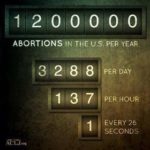 Dr. Wayne Grudem: An Example from Scripture
Dr. Wayne Grudem: An Example from Scripture
There’s a significant passage regarding abortion in Exodus 21:22–25 that says:
When men strive together and hit a pregnant woman, so that her children come out, but there is no harm, the one who hit her shall surely be fined, as the woman’s husband shall impose on him, and he shall pay as the judges determine. But if there is harm, then you shall pay life for life, eye for eye, tooth for tooth, hand for hand, foot for foot, burn for burn, wound for wound, stripe for stripe.
Two men are struggling, and they apparently unintentionally collide with a pregnant woman causing a premature birth, but the baby and mother are both okay. Those men are still fined for endangering the life of the unborn child and its mother. But then the text goes on to say “but if there is harm, then you shall pay life for life, eye for eye, tooth for tooth, hand for hand, foot for foot, burn for burn, wound for wound, stripe for stripe.”
If there is harm, the penalty is life for life. Capital punishment was imposed as the penalty for accidentally causing the death of an unborn child. The reason that’s significant is that in all the laws in the Mosaic law code, accidentally causing the death of another person normally was not a cause of capital punishment. You had to instead flee to a certain city and wait there a certain amount of time until the high priest died and then you would be free. It was a kind of house arrest. But you could not receive capital punishment for accidentally causing the death of another person.
Accidentally causing the death of an unborn child is the only case in the Mosaic law code in which accidentally causing death is punished by capital punishment—which I think means that God is placing a higher premium on protecting the life of the unborn child and the child’s mother than on protecting the life of anybody else in Israelite society. That’s a significant and weighty consideration, indicating we should value the protection of the life of an unborn child very highly.
In addition to that, this was a punishment for accidentally causing the death of an unborn child. How much more serious it must be in God’s sight to intentionally cause the death of an unborn child?
Why It Matters How We Treat Unborn Children from Crossway on Vimeo.

